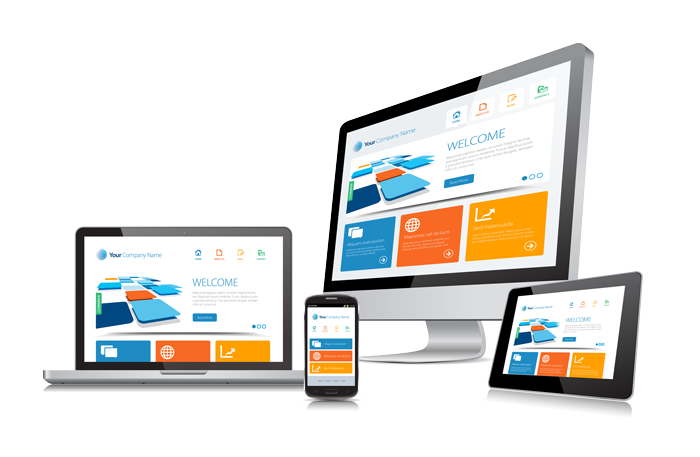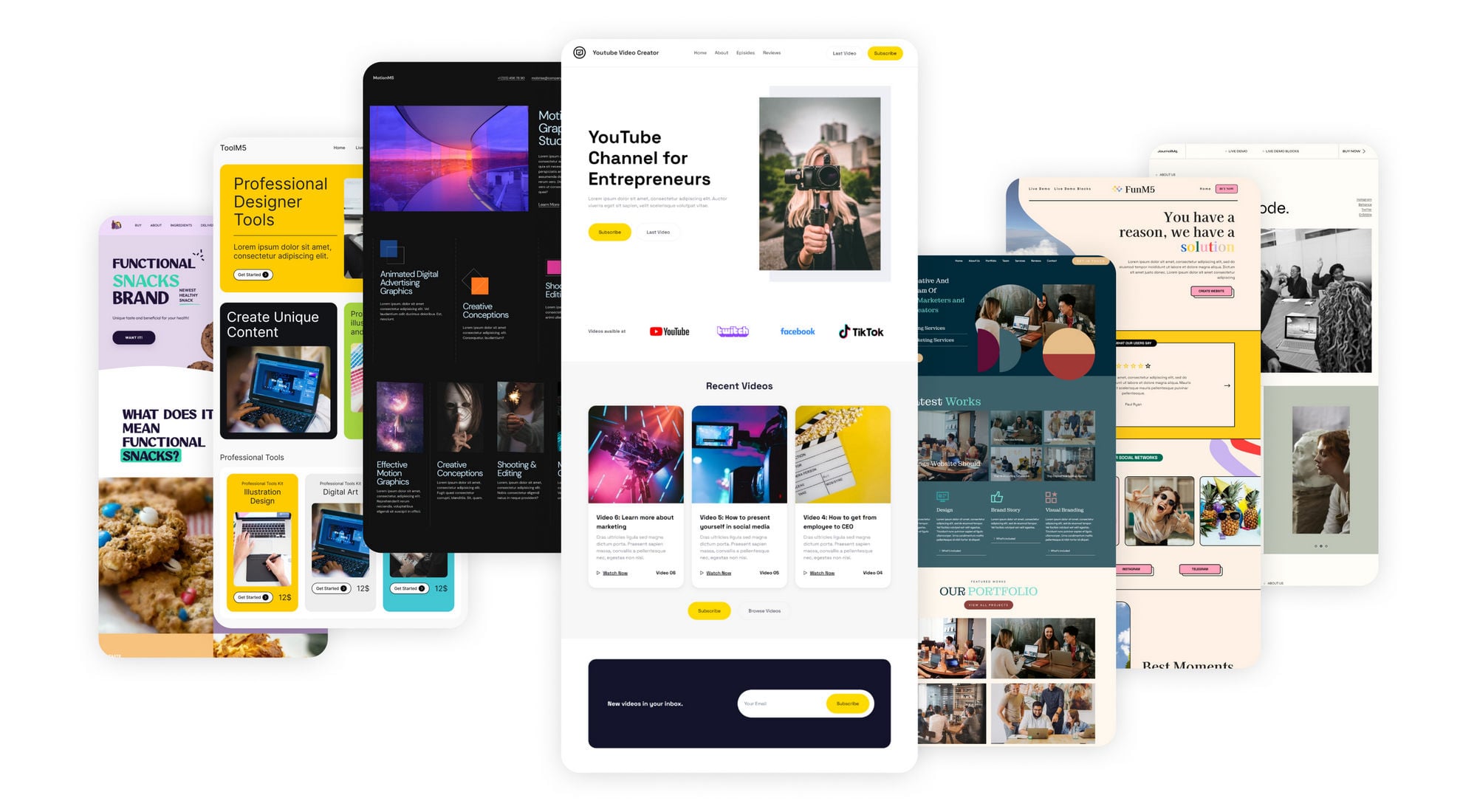Structure User-Friendly Interfaces: Ideal Practices in Website Design
Wiki Article
Trick Methods for Implementing User-Centric Web Site Layout to Increase Interaction
When considering the execution of user-centric internet site layout, particular strategies are critical in increasing involvement. Comprehensive research right into individual demands and choices creates the structure, guiding the production of individual personas to notify style options. Customizing web content enhances individual fulfillment, and robust availability functions broaden reach.Understanding Individual Demands
Understanding user requirements is a basic step in the procedure of user-centric website style. Methods such as surveys, interviews, and customer testing can provide useful qualitative and measurable data about exactly how customers engage with the web site.Analyzing this information permits designers to create detailed customer characters that stand for the different sections of the target market. These personas help inform design decisions by highlighting specific customer objectives and obstacles, directing the advancement of attributes that attend to these needs successfully. Understanding the context in which customers operate-- such as their atmosphere, gadget choices, and time constraints-- can additionally refine the layout approach.
Empathy plays a crucial role in this process, making it possible for developers to see the site from the individual's perspective. By focusing on individual needs, the layout process becomes more focused, avoiding the inclusion of unnecessary components that can clutter the individual experience. Inevitably, a deep understanding of customer needs is important in crafting a website that is both significant and functional.
Creating Intuitive Navigation
Having developed a comprehensive understanding of user needs, the next action in user-centric web site style involves producing instinctive navigation. Reliable navigation is fundamental to individual fulfillment, affecting how conveniently customers can find information and total jobs. To attain intuitive navigating, designers should focus on simpleness and clarity, ensuring that the navigation framework is rational and constant throughout the website.Organizing content into a clear hierarchy is important. Website Design. Making use of acquainted tags and icons can guide individuals effortlessly, reducing cognitive lots and improving the total customer experience. A properly designed navigating bar ought to be plainly put, permitting customers to recognize their existing area and quickly explore various other areas of the internet site
It is additionally essential to include interactive components such as breadcrumbs and search capabilities to aid individuals in navigating complex sites. These attributes offer added paths and boost the accessibility of web content, accommodating numerous individual preferences and actions.
Examining navigation with genuine users is necessary to identify possible discomfort points and guarantee performance aligns with individual expectations. Regular comments loopholes and repetitive renovations can assist preserve an effective navigating system that adapts to developing customer demands, inevitably enhancing interaction and complete satisfaction.
Developing Responsive User Interfaces
Usually, producing receptive user interfaces is a crucial facet of modern web design, guaranteeing that sites are useful and available across a plethora of devices and screen sizes (Website Design). This adaptability is crucial in a landscape where customers accessibility material through smart devices, laptop computers, tablets, and desktop computers, each with varying positionings and resolutions. The primary goal of responsive style is to enhance customer experience by maintaining optimum readability and use, regardless of the device usedTo accomplish this, web developers use adaptable grid formats, fluid images, and CSS media queries. Versatile grids permit site components to resize proportionally, while fluid images ensure visuals range appropriately without shedding top quality. Media inquiries play an essential function by applying different styles based upon the device's characteristics, such as height, positioning, and width, therefore tailoring the format to the user's screen.
Moreover, responsive interfaces add to improved seo (SEO) by using a seamless customer experience, which consequently can minimize bounce rates and link increase site interaction. In summary, taking on receptive layout is not simply a technical factor to consider yet a necessary method for cultivating a user-centric internet setting that meets the requirements of a varied audience.

Individualizing Material Experience
Personalizing content experience is an important component of user-centric web site design that includes customizing material to fulfill the unique preferences and habits of private customers. This approach not just improves user complete satisfaction yet likewise promotes much deeper involvement, as visitors are more likely to connect with web content that resonates with their interests and needs. By leveraging information analytics and customer feedback, businesses can determine patterns and trends that notify the personalization of internet material.Including personalization approaches can vary from basic changes, such as suggesting products based upon browsing background, to much more innovative methods like dynamic web content that adjusts in real-time to a user's communications. Individualized landing web pages can substantially boost conversion prices by supplying individuals with pertinent info and supplies that line up with their previous activities and choices.
Additionally, using expert system and artificial intelligence can better fine-tune content personalization by continuously picking up from individual behaviors and adapting to emerging trends. This not just boosts the customer's journey yet additionally develops brand name loyalty, as customers feel comprehended and valued. Ultimately, customizing the web content experience is an essential method for services intending to produce a more purposeful and engaging interaction with their audience.
Enhancing Ease Of Access Features
Enhancing ease of access features is a fundamental facet of user-centric web site style, making certain that digital web content is usable by every person, consisting of individuals with disabilities. This strategy not only conforms with lawful criteria click to find out more such as the Americans with Disabilities Act (ADA) and the Internet Material Availability Standards (WCAG) however likewise significantly expands a site's audience reach. By incorporating attributes like keyboard navigating, screen reader compatibility, and different message for images, internet sites end up being extra inclusive, providing a seamless experience for individuals with aesthetic, auditory, or motor problems.Including responsive design components is vital, facilitating access on numerous tools and display dimensions, therefore fitting individuals with various preferences and demands. In addition, comparison proportions and text dimension adjustments can boost readability for my site individuals with aesthetic challenges. Providing clear and concise material structure, such as headings and listings, help understanding and navigation, especially for users with cognitive impairments.
Normal access audits should be performed to identify and rectify prospective obstacles, making sure ongoing compliance and use. By prioritizing ease of access, businesses not just foster inclusivity yet likewise enhance total user involvement and contentment, inevitably driving greater conversion rates and enhancing brand commitment.

Verdict
Integrating user-centric layout methods significantly improves web site interaction by prioritizing the needs and preferences of users. Thorough research study promotes the development of user characters, assisting targeted layout decisions.Comprehensive research right into individual requirements and choices develops the structure, guiding the creation of individual characters to inform layout options. Strategies such as studies, interviews, and individual screening can give beneficial qualitative and measurable information about exactly how individuals engage with the internet site.
By focusing on individual demands, the layout procedure becomes extra concentrated, protecting against the incorporation of unnecessary elements that can clutter the customer experience. Efficient navigating is fundamental to customer complete satisfaction, influencing exactly how quickly users can find info and total tasks. The usage of acquainted labels and symbols can assist customers effortlessly, decreasing cognitive tons and enhancing the general individual experience.
Report this wiki page